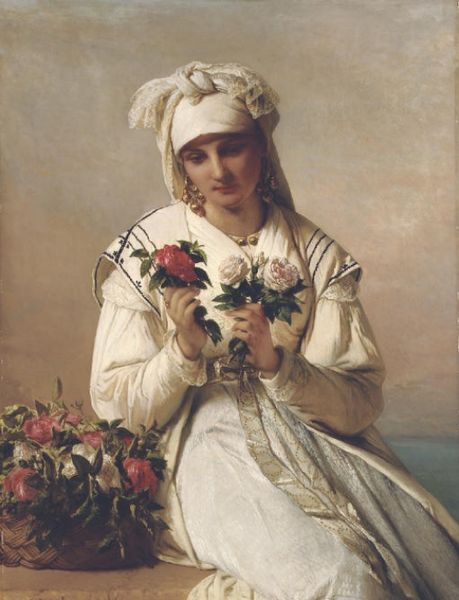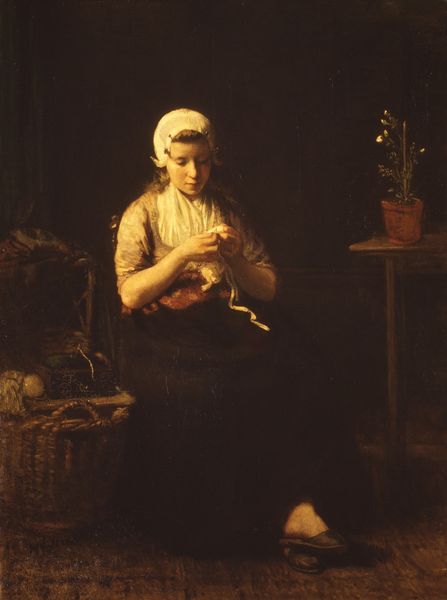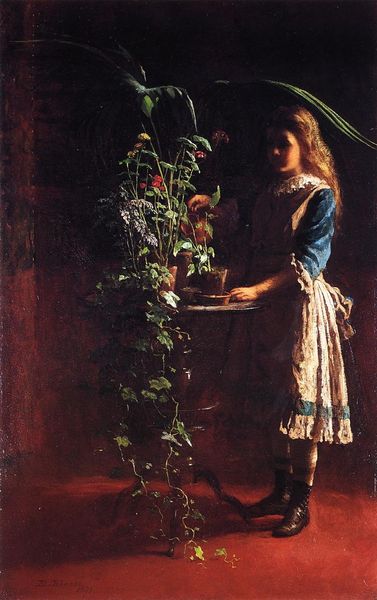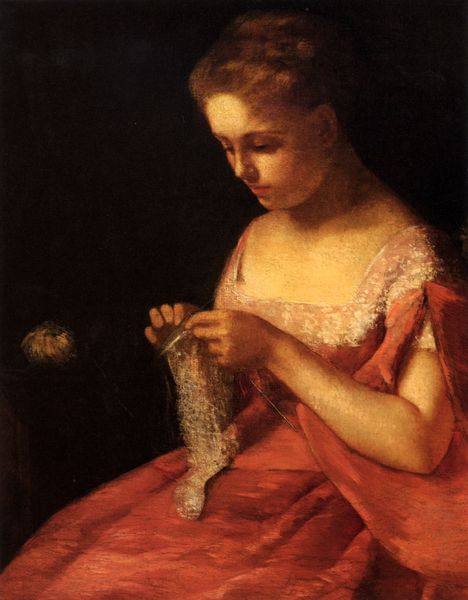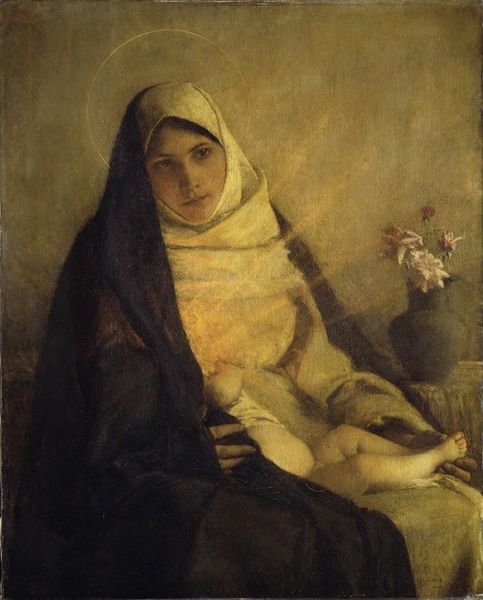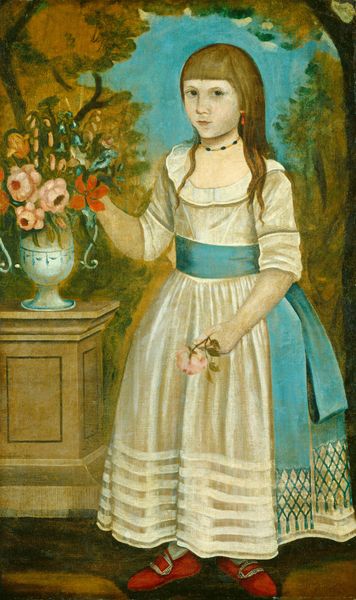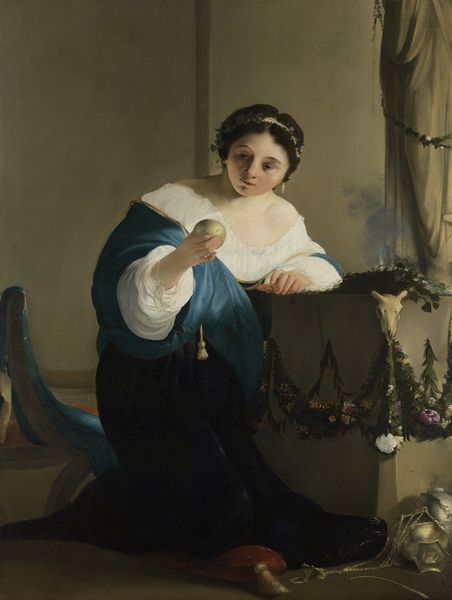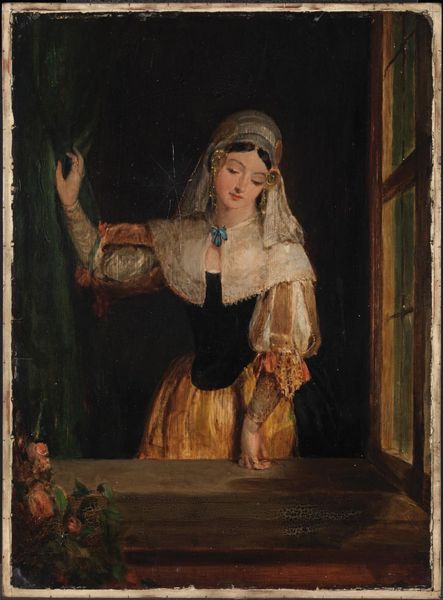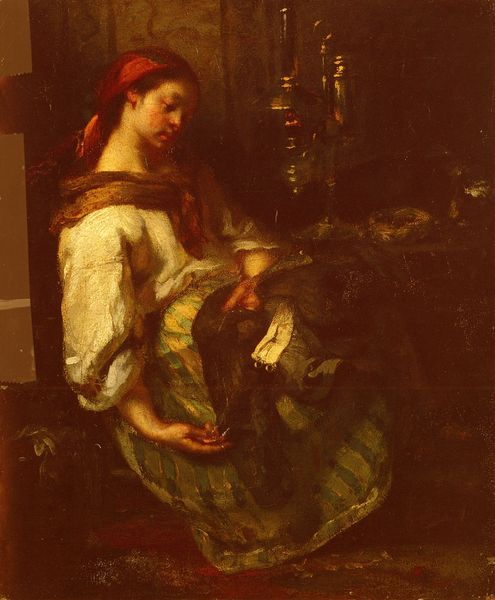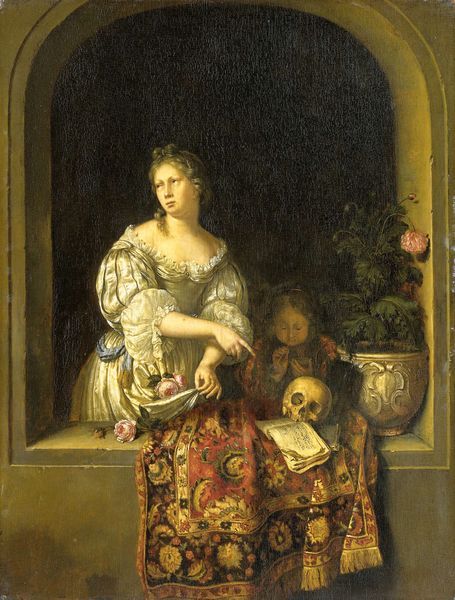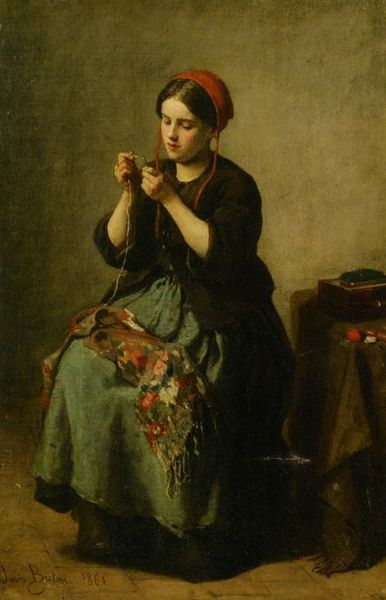
painting, oil-paint
#
portrait
#
painting
#
impressionism
#
oil-paint
#
oil painting
#
genre-painting
#
lady
#
realism
Copyright: Public domain
Curator: Here we have Théodule Ribot's painting titled "A Girl Arranging a Vase of Flowers". It’s an oil painting, exhibiting characteristics of both realism and impressionism. What are your first thoughts? Editor: My initial feeling is one of subdued melancholy. The girl’s downcast gaze, the dim lighting, and the slightly muted colors all contribute to a sense of quiet introspection and perhaps the weight of societal expectations placed on young women during this period. Curator: Precisely. Notice how the artist employs a limited color palette – primarily earthy tones with a stark contrast of bright red around the bodice. This is a conscious compositional decision to draw the eye toward the girl’s central posture, highlighting the geometry of the portrait itself. The stark blacks isolate the figure, thus centralizing her within the picture plane. Editor: I see it differently. To me, that dash of red, amidst the drab earth tones, represents a subtle rebellion. It’s a quiet assertion of individuality within the confines of a patriarchal structure. It's hard not to read her placement—in a dimly lit background—as indicative of limited social mobility. Is she arranging flowers by choice, or is she expected to fulfill this traditional role? Curator: It is definitely intriguing to consider. Ribot's brushstrokes, while seemingly impressionistic in their looseness, still contribute to the overall structure and form. There's a tension between the perceived "unfinished" quality and the carefully rendered details in her face and hands. It emphasizes the visual experience over pure replication of reality. Editor: Yes, the lack of explicit detail invites the viewer to project narratives. It makes me wonder about the other laboring women, often unseen in mainstream art, and how their contributions were overlooked or deemed less important. Curator: I concede your points certainly provide deeper societal implications worth discussing. Thank you for your astute observations. Editor: And thank you for providing a compelling formal perspective, without which a full, intersectional reading would not be possible.
Comments
No comments
Be the first to comment and join the conversation on the ultimate creative platform.
